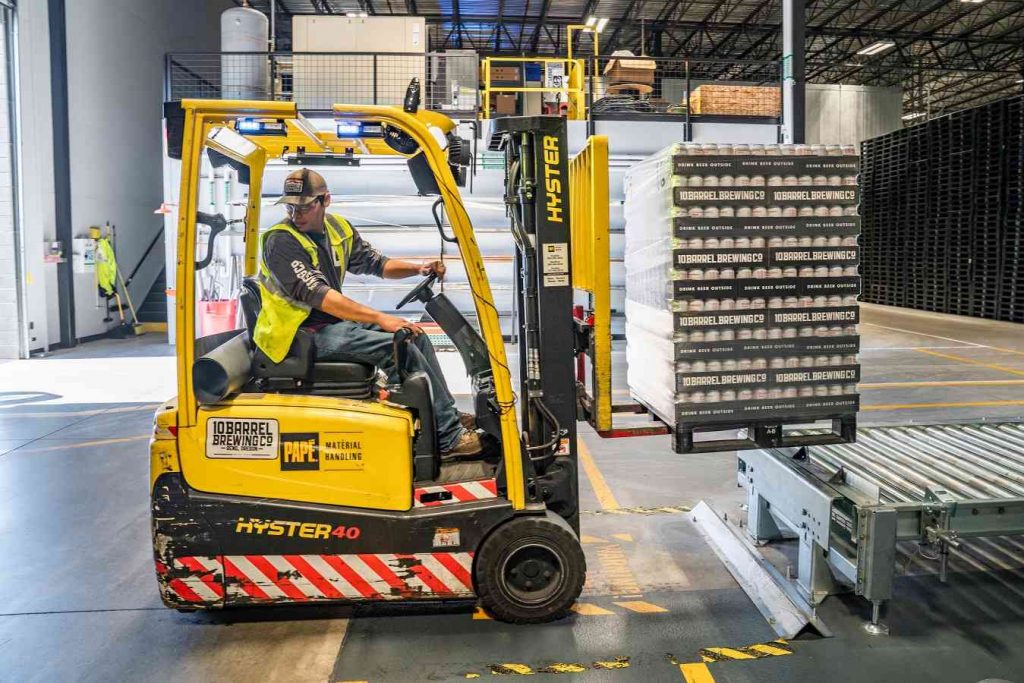Amazon has grown online selling by launching the marketplace approach and has also redefined how new business owners and startups scale computing assets such as servers and services from the Amazon web services business.
Along with that, they are still dependent on third parties when it comes to the delivery part or when it comes to offering logistics service to export goods. Mainly that delivery services are provided by USPS, FedEx, and UPS. These services are one of Amazon’s biggest costs, as fast delivering packages to customers around the world is crucial to the vision of Amazon e-commerce.
Amazon is testing a service that can access FedEx and UPS. The service was launched in India two years ago and Amazon has gradually started marketing in the United States merchants to prepare for national expansion. Amazon calls it the Seller Flex Project. The idea is very simple. Amazon wants to collect products from third-party resellers warehouses and deliver them to customers.
The Amazon Seller Flex was introduced to provide sellers with better inventory control and uninterrupted shipping benefits. An online retailer recently told that the service also has negative consequences. And if not treated seriously, it can have a serious impact on your business. It is definitely new and there are many sellers who are still unaware of this Seller Flex service and there are few who know about the concept but they don’t how to take advantage of it.
What is the Amazon Seller Flex program?
Amazon Vendor Flex is a fulfillment program designed to give sellers greater control over their inventory.
The compliance program allows sellers to store all of their products in their warehouse using the Amazon FBA (Fulfillment By Amazon).
Therefore, they can store and keep at the same place, they can package their product in the warehouse. This allows them to take the benefits of delivering their products within 1-2 days. The seller flex order processing is very fast which makes the customer experience up to the mark.
Amazon Seller Flex Program Eligibility Criteria
Remember that you cannot directly contact Amazon for registration for the seller flex program, Amazon itself strategically identifies and invites specific retailers based on multiple parameters. There is also no lengthy process in the seller flex registration process.
Here’s How the Amazon Seller Flex works
- You can keep all your stocks at your warehouse.
- Once you see any order in your account, you can directly process the order in the seller central
- Don’t forget to pack the goods in the Amazon-branded packaging material.
- Amazon Transportation System (ATS) collect the courier and ship it on the same day to be then delivered within 1 to 2 days to the customers.
Different products which are the best suited for the seller flex program:
- All your products require special attention during shipping and storage, here you can use the amazon seller flex India. This allows you to have better control over your goods.
- Time-consuming products have additional costs as they are stored for a long time in the FBA warehouse. You can choose the Seller Flex program for this type of product, and since the products are stored in your warehouse, there are no additional costs. This also applies to seasonal products.
- Products that are huge, heavy in weight, and delivered in bulk require additional storage costs in the FBA warehouse. For these types of products, you can use the Seller Flex Program to reduce additional costs.
You can easily Find out which Amazon program is more suitable and best for your business, The Seller Fulfilled Prime program or products which are fulfilled by Amazon (FBA)
Here are 5 Major Differences Explained:
1. Fulfillment

One of the key differences between FBA fulfilled by Amazon and SFP is how they both actually work and the way sellers’ different products are fulfilled.
As the name itself contains, Fulfillment by Amazon which means all your stocks and inventory is fulfilled by Amazon. Once you deliver the product the entire responsibility is of Amazon. You deliver the items to the Amazon fulfillment centers, here they keep your product until a customer decides to purchase it. Then after Amazon picks, packs, and ships your product for your customers, while you sit back in relax mode at your home and get all your profit without any hassle.
Fulfillment with the Seller Fulfilled Prime is up to you. Customers are going to land on the Amazon Prime model as usual, but your company delivers the orders directly to them and all without interference from Amazon.
So, now what happens with SFP?
Shipping: The big difference between shipping products with Amazon and using SFP is that for each delivery you have to pay individually for your product shipping. This can drastically reduce profits and lead to negative sales if you are not careful.
Delivery adds another level of logistics. Delivery information must be obtained through the Amazon Buy Shipping Tool, which means you only need to log into Amazon to create and print shipping labels. This can be a big challenge, you may need a third-party configuration built into the Amazon API to automate this process.
2. Commissions

Sit back, relax and enjoy, we said. It’s really good to be positive, you thought. If you are false, you may be true.
This is all because of the FBA prices. Since everyone is familiar with Amazon’s implementation schedule, the level of Amazon compliance can change at any time. The price structure of all these facilities is updated annually and sometimes more frequently. If you don’t keep up to date with the latest inventory usage rate, remember, this can cost you more and can eat your profit.
Amazon does everything for its sellers. So you can think it is likely amazon to ask for something to come back. And it might come with some cost. Here is an example, Take a nice lightweight standard size Formal shirt, and the marketplace charges around $4 per unit for picking, storing, and packaging for that formal shirt. And if those formal shirts are kept in reserve on shelves for more than a quarter, then your product charges will get soared. Sometimes even the changes in storage become so high that it charges more than the product’s real price.
SFP users, on the other hand, can avoid these charges. Since you don’t send anything to Amazon for storage, processing, packaging, or return, an invoice isn’t sent at an incredible price. Of course, it is more work than the transport costs, but this margin is yours.
3. Storage

Another area that highlights the differences between the two these two inventory-keeping methods is storage. There is also a big factor which is Inventory Storage to look for and it draws special attention to major differences in both these programs.
But for the rest of us, there are many sales channels available to choose from, why?
There are many customers which are always beneficial. Amazon offers a multi-channel fulfillment service but when you use this you have to lose control of your precious inventory. When you use seller fulfilled prime, you need to invest in your warehouse to control your stocks and fulfillment – which can be costly to get, maintain as well as invest in staff. There are some other works also, such as when you become a seller fulfilled prime member you have to make sure that the prime order delivers on the same day. With that point in mind, Seller must have trained their staff which can produce higher efficiency with respect to High orders per day.
4. Checking Inventory

With fulfillment by Amazon, once you ship your inventory to the warehouses of Amazon fulfillment, it’s gone. This means you’ll be limited when conducting any offers or promotions on other e-commerce or marketplaces or even on your own .com. Many times, the seller has to recall their amazon inventory from Amazon Warehouse, or else after a quarter the seller must be prepared to pay for fulfillment services that he is enrolled in.
Amazon inventory can also cause difficulties when it is precisely determined what is in stock and when the inventory becomes out-of-date. As mentioned earlier, Amazon has been charging penalty fees for more than six months in the command center.
The difference with SFP is that you have total control over your inventory. There is no split inventory between Amazon stores and your list. All of your products can be stored in one location or one warehouse, which means you have full control of your inventory. This is a big advantage if you sell multiple sales channels or have a physical niche. Thus, sellers can then have more advantages whenever events like the Great Indian sale, Prime Day, etc. come. At that time, the seller can receive more orders because of high traffic.
5. Returns
When Amazon does its inventory, the market returns the handles in its name and provides “first-class” customer service. This is very useful for entrepreneurs that will take advantage of the time and resources you can save.
With SFP, your business handles all of your amazon seller flex returns. This means that you must have your own functional return and customer service departments. However, this has its advantages, because while Amazon sends a generous batch of returned products to FBA members, things are certainly less vague with SFP.
The seller can easily notify about which products have been returned to them from the customers and that in turn dip the loss of customer fraud.
Remember, however, that Amazon wants SFP providers to follow the same rules as their marketplace. This means that the items can be automatically returned to the seller’s account without first contacting the seller.
Advantages of the Amazon Flex seller program to FBA:
This is the case for large retailers who have their own stores. Amazon agents will collect the shipment from your warehouse and ship it.
- The inventory will remain at your location under your eye with the FBS tag
- You can freely and quickly manage a wider range of FBA offers, with no additional inbound and outbound shipping costs.
- Eliminate the need for appointment approval before submitting your property.
- Take advantage of the next day and 2-day shipping for all your products by increasing the reach of your customers.
- Take advantage of the guaranteed daily Amazon Transport Team package collection in your area, ensuring that all of your packages are delivered on time.
- Work only 5 days a week.
- There are FBA transport fares far lower than MFN Easyship.
If you are an offline retailer, most of them have the infrastructure ready. This reduces the cost of investments. If you are a full online retailer, there will be additional storage and labor costs. Other investments should be considered. You may not need the resources for the rest of the day after you ship the product.
FAQ:
1. How does seller flex work?
Amazon seller flex is the best program designed for amazon sellers and it is implemented in sharing inventory management, shipping, and warehousing.
2. What is the meaning of seller SKU?
SKU means Stock Keeping Unit.
3. What is Amazon vendor Flex?
It is a program designed for Amazon Sellers.
4. How to get seller flex?
Amazon sellers can apply for the seller flex program with their Business Details.
5. How to apply for seller flex?
The seller can apply to the seller flex program by logging into their amazon seller central dashboard.
6. What is amazon seller flex?
Amazon Seller Flex program is designed for sellers who can maximize their sales with Fast Shipping and Order Processing.

